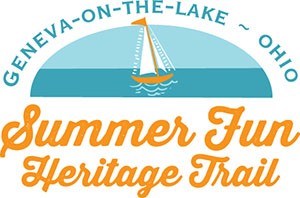Bingo parlors arrived on The Strip in the 1920s, as the resort was transitioning from serving the Cleveland-area tourists of means to the middle and working-class visitors who arrived by automobile.
In Ohio, only nonprofits could benefit from the game, so while there were individual bingo operators on the strip, the benefactor was common: the village’s fire department, organized in 1924.
Thus, the bingo operator deducted from the revenue the cost of renting/operating the real estate and game, the wages of employees and the cost of the prizes before turning the balance over to the fire department.
At GOTL, cash bingo was not played; prizes were awarded. These included kitchen appliances and other items that appealed to the female players, who often wiled away their afternoons at the bingo parlor their husband played golf and the children went to Pera’s Kiddieland, the beach or an arcade.
And, true to the stereotype, bingo was popular with “grandma”; during the era the game was being challenged in Ohio’s courts, bumper stickers urging complete legalization argued for “keeping grandma off the street” as a reason.
One of the earliest bingo parlors documented was run by the Pera family. It started in a tent and was soon moved to a building next to the Shore Shop. A postcard from the 1930s documents the parlor:

Virtually every midway had at least one bingo parlor; Snell’s, also known as the Olympic Midway, had two
Clara Jolly, who owned the Youngstown Manor, also had a bingo. The building where Pucker Up is located was once a bingo parlor, as well.

The Pier Bingo was still around in 1958, when this Star Beacon photo was taken.
By the early 1970s, bingo was essentially illegally under the Ohio Revised Code, but no penalties were being brought up operators. But in some cities, bingo was being operated by organized crime, and the issue eventually went to the ballot. The determination was that charitable bingo could be played, but with significant restrictions. There could not be more than two sessions per week at a given location, and a session had to be five hours or less. Employees were not allowed to be paid for anything that they did at the game. The operator had to be a member of the organization benefited by the operation, and that person had to be a volunteer, as well.
The new Bingo law went into effect in June 1976.
At that time, GOTL still had four bingo parlors operating, and all of them were being operated from noon to midnight daily. The fire department filed for a license with the Charitable Foundation section of the Ohio Attorney General’s Office. The hours of operation and number of days operated came under scrutiny. Eventually all bingos had close because they were not meeting the terms of the new law, and doing so would neither be profitable nor practical for a resort-based game.
Some of the shops tried to find legal variations on the game. For example, at Pera’s long-time Pier Bingo, Skillo appeared in 1977. But the public was slow to embrace the game and it was removed after a few years. Other bingo games likewise closed on The Strip.
